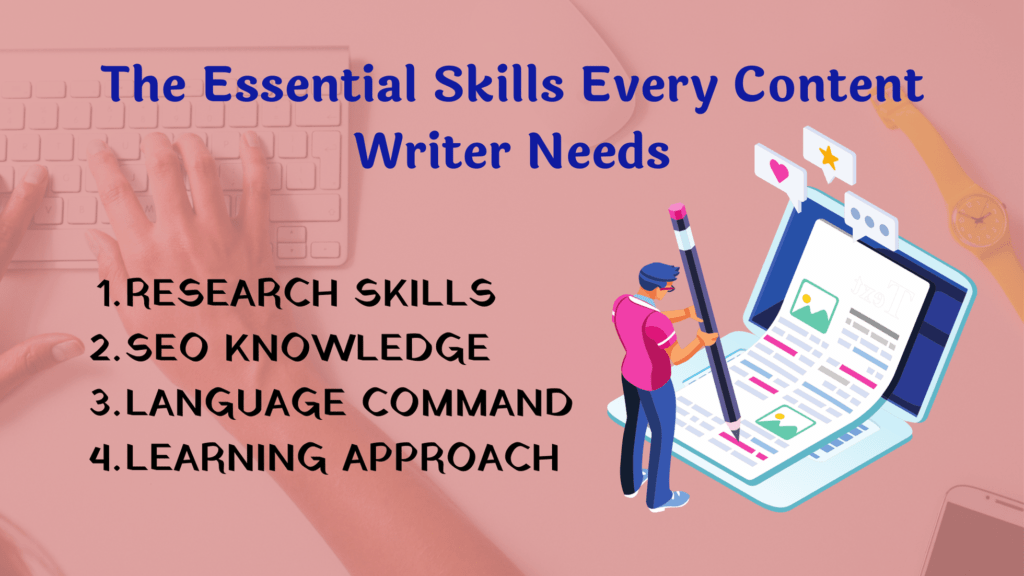In today’s digital world, content is king. Whether you’re building a personal blog, managing a company website, or running a social media campaign, engaging and informative content is essential. But what exactly is content writing? How does it differ from other forms of writing, and how can you create captivating, impactful content that stands out in an oversaturated digital space?
This comprehensive guide will answer those questions and more. From understanding the basics of content writing to mastering SEO optimization, you’ll learn everything you need to know to create content that not only engages your readers but also drives traffic and conversions.
—
1: Understanding the Basics of Content Writing
1.1 What is Content Writing?
Content writing is the process of creating written material for various platforms, whether digital or print, with the goal of informing, engaging, or persuading a target audience. Content can come in many forms, including blog posts, articles, website copy, product descriptions, newsletters, and more. It serves as the foundation of most digital marketing strategies.
1.2 Why is Content Writing Important?
Content writing plays a vital role in digital marketing by:
– Driving website traffic through SEO-optimized content.
– Building credibility and authority in your niche.
– Educating and informing potential customers.
– Encouraging reader engagement and social sharing.
– Converting website visitors into paying customers.
1.3 Content Writing vs. Copywriting
While both are essential in marketing, content writing and copywriting serve different purposes:
– Content writing: Typically more informative, focusing on educating or entertaining the reader. Examples include blog posts, tutorials, and articles.
– Copywriting: More persuasive and sales-driven, focusing on getting the reader to take a specific action (e.g., making a purchase or subscribing). Examples include ads, landing pages, and email marketing.
Read More : Content Planning for Blogging: Where and How to Start
2: The Essential Skills Every Content Writer Needs

2.1 Research Skills
Research is the foundation of great content. A content writer must gather relevant, accurate information to support their points and provide value to the reader. Use credible sources like research papers, trusted websites, and interviews with subject-matter experts.
2.2 SEO Knowledge
Search engine optimization (SEO) ensures that your content is discoverable by search engines. Writers need to understand:
– Keyword research: Finding relevant keywords that your audience is searching for.
– On-page SEO: Optimizing your content’s structure with appropriate headings, meta descriptions, and image alt text.
– Linking strategies: Including internal and external links to provide more value.
2.3 Writing for Your Audience
Effective content resonates with the target audience. Understand who you’re writing for by developing audience personas. These personas should outline the demographics, pain points, and interests of your readers.
2.4 Tone and Voice
Each piece of content must match the tone and voice of the brand or publication. Tone refers to the emotional impact (e.g., casual, formal, humorous), while voice is the personality behind the writing.
2.5 Editing and Proofreading
Editing is crucial for polishing content. After drafting, review for clarity, flow, grammar, and consistency. Use tools like Grammarly or Hemingway to catch errors and improve readability.
—
3: The Content Writing Process – Step-by-Step
3.1 Planning and Researching
Begin by defining your topic and conducting thorough research. Structure your content with a clear outline that organizes your key points logically. Good planning prevents writer’s block and ensures a smooth writing process.
3.2 Writing the First Draft
Your first draft doesn’t have to be perfect. Focus on getting your ideas down. Use subheadings to break up content, and write compelling introductions to draw readers in. Build each with evidence, examples, or storytelling to keep readers engaged.
3.3 Revising and Editing
Editing is where your content truly shines. Refine your sentences for clarity, shorten long paragraphs, and ensure your content reads smoothly. Don’t forget to optimize for SEO by checking keyword placement and formatting.
3.4 Finalizing and Formatting
Use proper formatting to enhance readability:
– Headings and subheadings should break up the text.
– Use bullet points or numbered lists for easy scanning.
– Incorporate images, infographics, or videos to add visual appeal.
—
4: Crafting Captivating and Engaging Content
4.1 Headline Writing Techniques
Your headline is the first impression, so make it count. Use numbers, questions, or emotional triggers to make your headline irresistible. For example, “10 Proven Tips to Boost Your Website Traffic” is more engaging than “Website Traffic Tips.”
4.2 Writing Engaging Introductions
Your introduction needs to hook readers within the first few sentences. Use a question, an interesting fact, or a bold statement to grab attention.
4.3 Using Storytelling in Content
Storytelling builds an emotional connection with the reader. Even in educational content, you can incorporate stories to illustrate points and make them more memorable.
4.4 Making Content Easy to Read
Make sure your content is skimmable:
– Use short sentences and paragraphs.
– Include subheadings and lists.
– Keep your language simple and to the point.
4.5 Encouraging Action with CTAs (Calls-to-Action)
Every piece of content should have a purpose. A CTA directs your readers to take a specific action, whether it’s subscribing to your newsletter, purchasing a product, or sharing the content.
—
5: SEO Optimization for Content Writers
5.1 What is SEO and Why Does it Matter?
SEO makes your content discoverable by search engines like Google. Without SEO, even the best content can get lost in the noise of the internet.
5.2 Keyword Research
Use tools like Google Keyword Planner, SEMrush, or Ahrefs to identify the search terms your audience is using. Choose relevant keywords with a balance of search volume and competition.
5.3 On-Page SEO Techniques
Ensure keywords are placed in strategic areas like:
– Title tags and meta descriptions.
– Headers (H1, H2, H3, etc.).
– Image alt text.
But remember, avoid keyword stuffing, which can harm readability and SEO rankings.
5.4 Avoiding Keyword Stuffing
Ensure your content flows naturally, even with the inclusion of keywords. Use variations of your keywords (LSI keywords) to diversify the language.
—
6: Common Challenges and How to Overcome Them
6.1 Dealing with Writer’s Block
Every writer faces writer’s block. Combat it by:
– Breaking your writing into smaller tasks.
– Changing your environment.
– Using writing prompts to spark creativity.
6.2 Managing Tight Deadlines
Time management is essential. Prioritize tasks, eliminate distractions, and use tools like Pomodoro to stay focused.
6.3 Balancing Creativity and SEO
Striking the right balance between writing creatively and meeting SEO guidelines is tricky. Prioritize the reader experience while subtly incorporating SEO strategies.
6.4 Handling Rejection and Feedback
Criticism can be tough, but it’s an opportunity to grow. Always ask for constructive feedback, and apply suggestions to improve your writing.
—
7: Advanced Content Writing Tips
7.1 Repurposing Content
Turn blog posts into podcasts, videos, or infographics to reach a wider audience. Repurposing maximizes the value of your content.
7.2 Content Writing Tools Every Writer Should Use
Essential tools include:
– Grammarly: For grammar and style checks.
– Hemingway: For improving readability.
– BuzzSumo: For identifying trending content.
– Google Analytics: For measuring content performance.
7.3 Staying Updated with Industry Trends
Digital marketing and SEO are constantly evolving. Subscribe to industry newsletters, join webinars, and follow experts on social media to stay current.
—
8: Measuring the Success of Your Content
8.1 Content Performance Metrics
Measure the effectiveness of your content using:
– Traffic: How many people are visiting your page.
– Engagement: Time on page, social shares, and comments.
– Conversions: How well your content drives leads, sales, or desired actions.
8.2 Using Analytics Tools
Google Analytics, SEMrush, and other tools help track performance metrics and show what content resonates with your audience.
8.3 Improving Based on Data
Use data insights to refine future content strategies. If certain topics or formats perform well, produce more of them.
—
Conclusion
Content writing is both an art and a science. From mastering SEO techniques to crafting compelling narratives, creating impactful content requires a mix of creativity, research, and technical skills. By following the steps outlined in this guide, you can produce content that not only captures your audience’s attention but also drives meaningful results.
As you grow as a content writer, remember that continuous learning and adaptation are key. Stay informed on industry trends, seek feedback, and keep practicing your craft to hone your skills.
—
Frequently Asked Questions
1. What’s the difference betweeen content writing and copywriting?
– Content writing is focused on providing informative, valuable content, while copywriting is more persuasive and sales-oriented.
2. How can I improve my content writing skills?
– Read widely, practice writing regularly, and seek feedback from peers or mentors. Use tools like Grammarly and Hemingway to improve your writing style.
3. What are the best tools for content writers?
– Essential tools include Grammarly, Google Keyword Planner, SEMrush, and Google Analytics.
4. How do I find the right keywords for SEO?
– Use keyword research tools like Ahrefs, SEMrush, or Google Keyword Planner to identify relevant keywords based on search volume and competition.
5. How can I repurpose my content?
– Turn blog posts into podcasts, videos, infographics, or social media posts to reach different audiences on various platforms.


